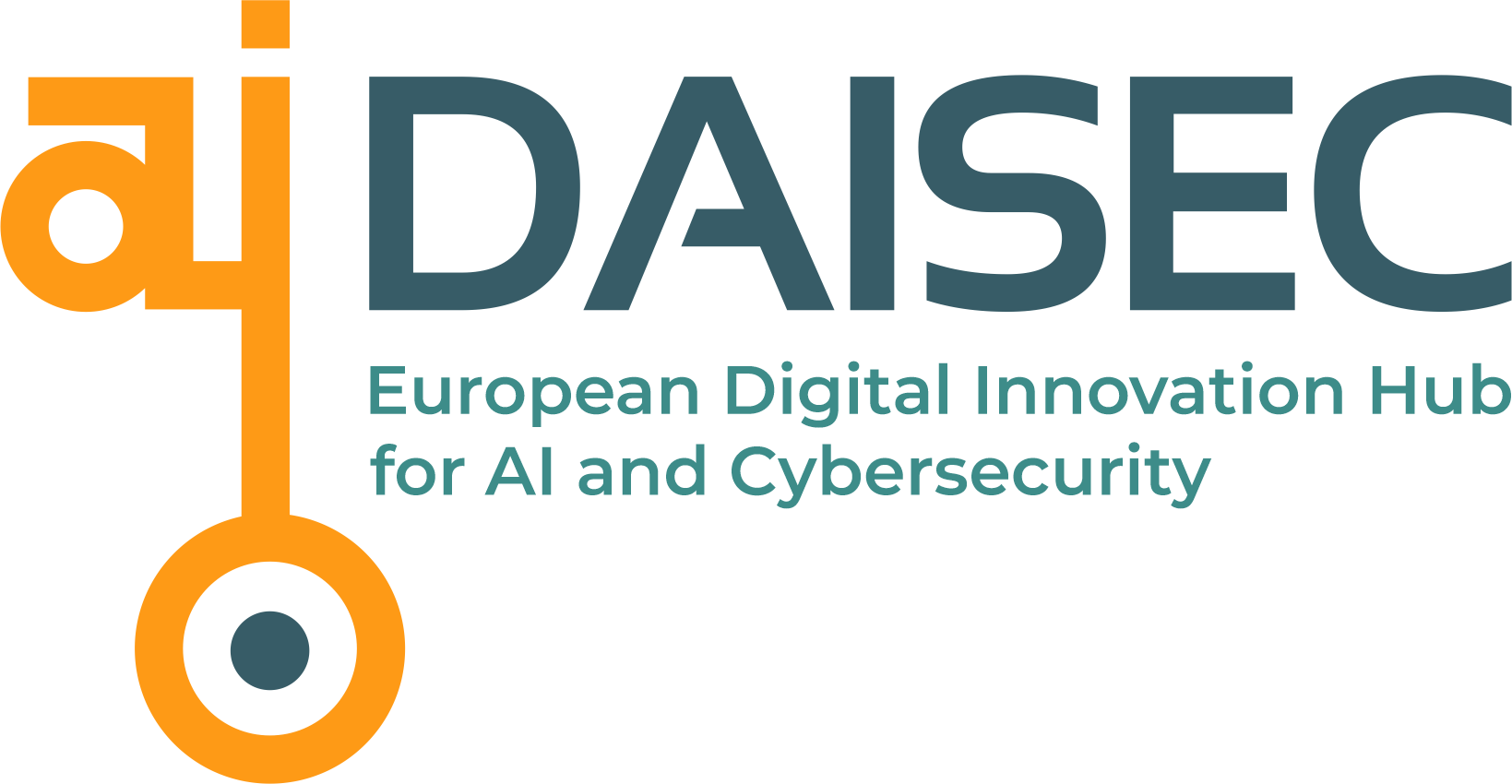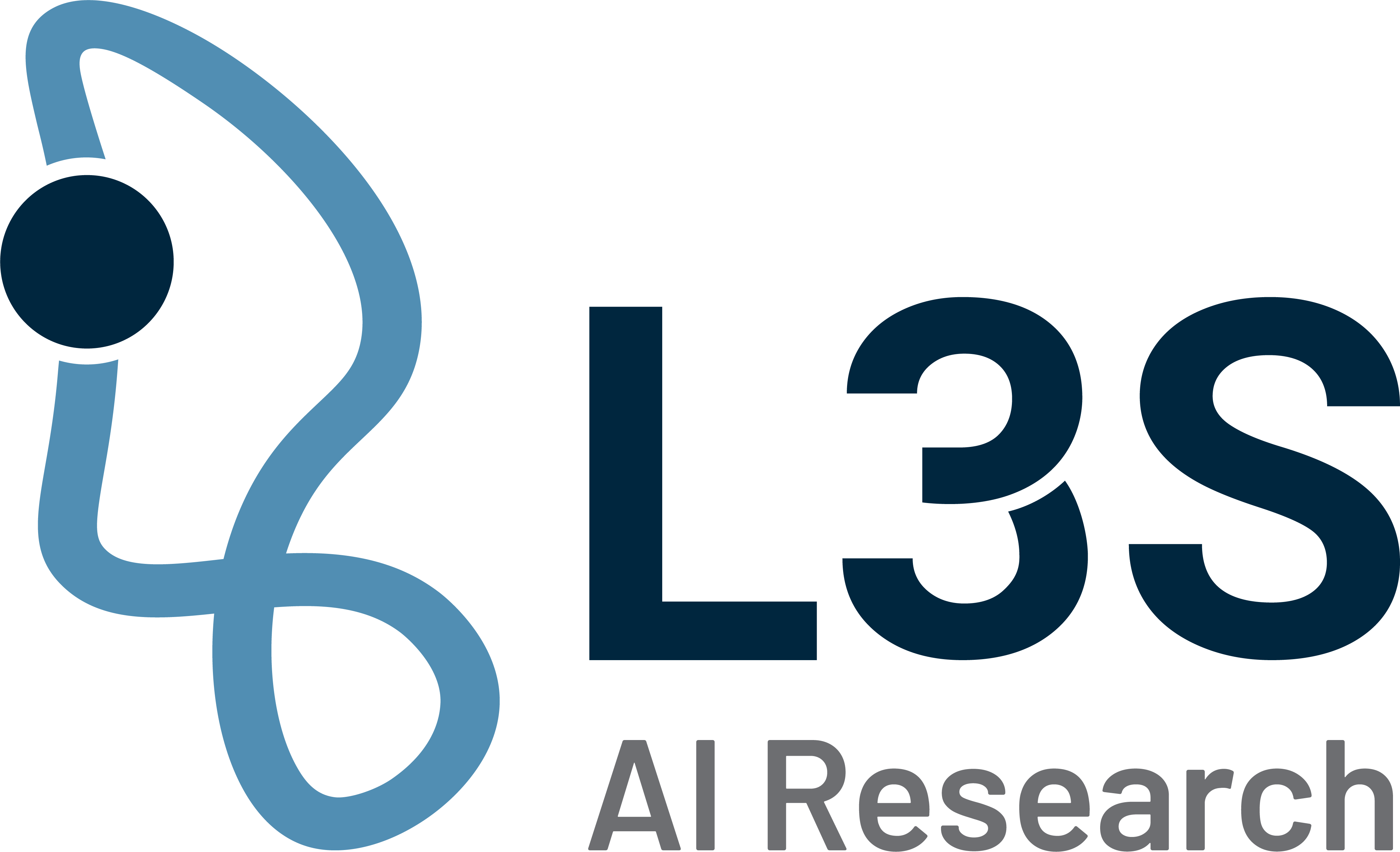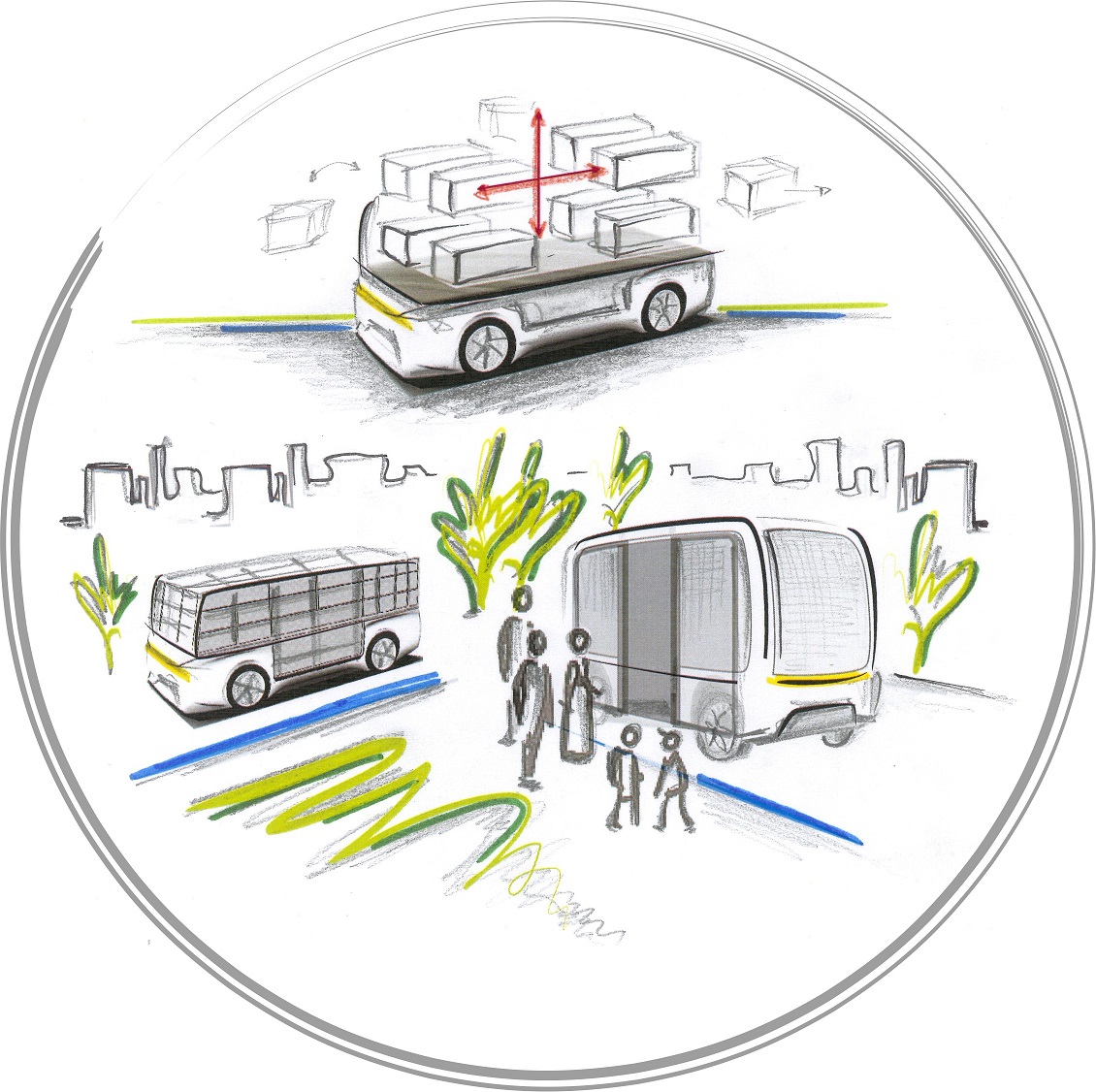
Foto: Petia Krasteva / TU BS
Tomorrow’s mobility – from concept to practical demonstration
DIH partners Introduce themselves: Automotive Research Centre Niedersachsen
Sustainability and mobility still seem to be contradictory terms. Vehicles that are not powered by fossil fuels have so far played a subordinate role. Autonomous cars on the road and innovative sharing concepts still sound like visions of the future. To make these concepts a reality, well thought-out solutions are needed. At the Automotive Research Centre Niedersachsen (NFF), a centre of the Technische Universität Braunschweig with 38 institutes from five faculties, research is being carried out on the entire spectrum of mobility.
The NFF research fields of Flexible Vehicle Concepts and Vehicle Production and Intelligent and Connected Driving offer excellent opportunities for collaboration with a focus on the development of novel mobility vehicles. Dynamically configurable autonomous vehicles are being developed in the ERDF innovation network autoMoVe. They offer the possibility to change their body during use and can thus be optimally adapted to different use cases, such as passenger or freight transport.
The development of the highly modular vehicles is initially carried out virtually – among other things through the use of virtual reality technology (VR). In addition to the purely virtual representation of the vehicles, a mixed form exists with Mixed Reality, in which real test vehicles are overlaid with virtual components. “The aim is to make everything appear as realistic as possible so that the vehicle prototypes can be checked early on in the product development process,” explains Christian Raulf from the NFF. The conceived concepts can then be simulated on virtual test benches and evaluated with the help of real test vehicles.
One of these vehicle test vehicles is PLUTO (PLattform for future Urban Mobility and TranspOrt). The driving platform allows the real implementation of the developed concepts. The electrified vehicle is a so-called “rolling chassis” that accommodates all elements of the drive and the chassis and can be equipped with various add-on modules. In this way, the vehicle can be used for different applications.
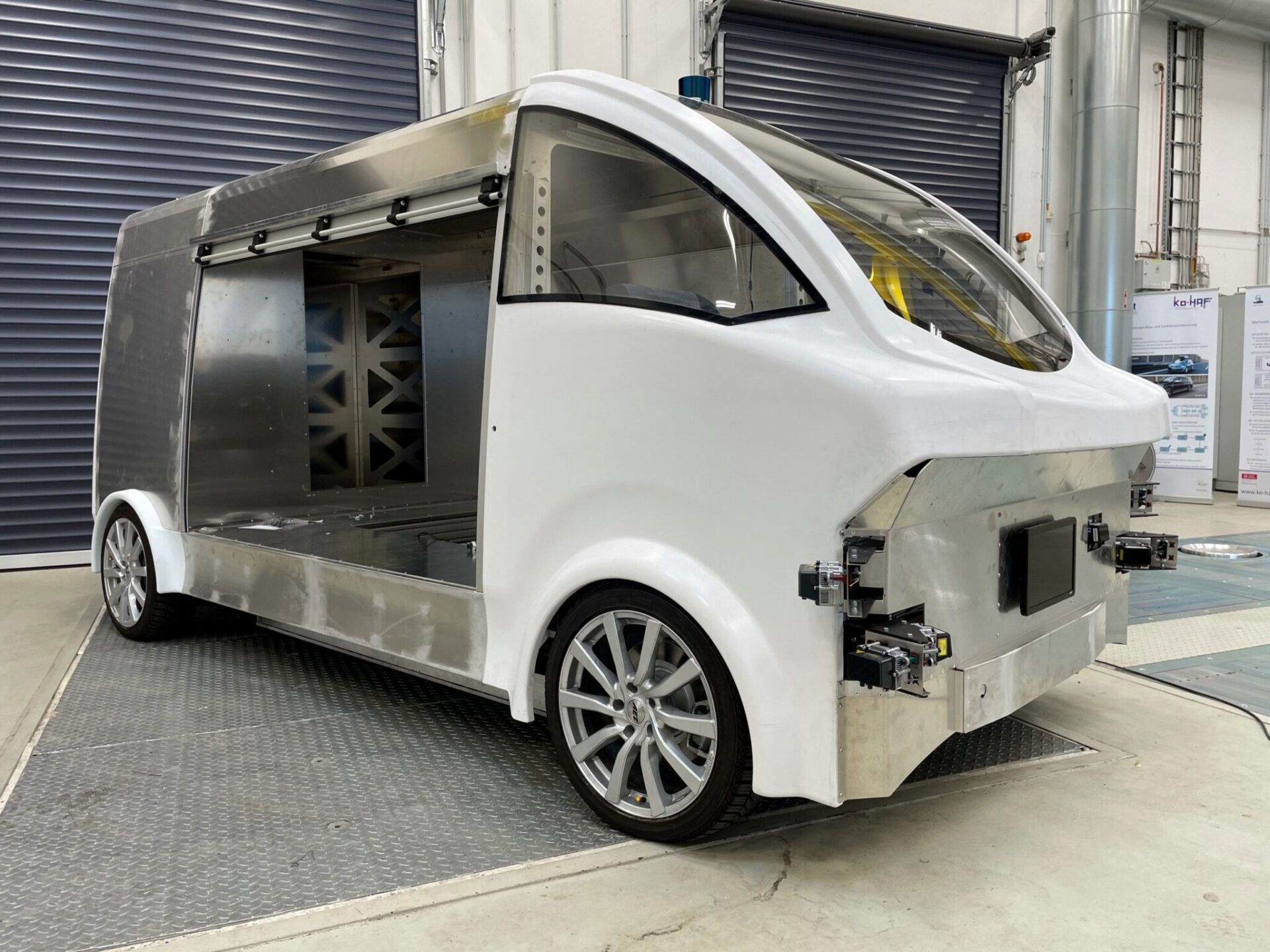
PLUTO vehicle test carrier with prototypical logistics vehicle superstructure ©Adrian Sonka
TU Braunschweig
One planned application is the implementation of a passenger shuttle as part of the “Circle2Circle” initiative. The participating scientists want to demonstrate fully automated driving in public road traffic at the research airport in Braunschweig. For this purpose, they are transferring findings from the autoMoVe project regarding the vehicle concept and the developed algorithms of automated driving from simulation to reality. The joint research project VanAssist, funded by the Federal Ministry of Transport and Digital Infrastructure, has already implemented the use case of an automated logistics vehicle and successfully demonstrated it in real driving: During a delivery trip, the vehicle ran fully automatically and drove to various delivery stops in cooperation with the delivery person. This is how the delivery process can be efficiently supported in the future.
The future visions of sustainable autonomous vehicles therefore do not seem as utopian as imagined. The development of highly networked autonomous vehicle concepts and their driving functions requires interdisciplinary collaboration using virtual tool chains and real-life tests. The interdisciplinary collaboration at the NFF makes it possible to map this holistic development process.
Contact
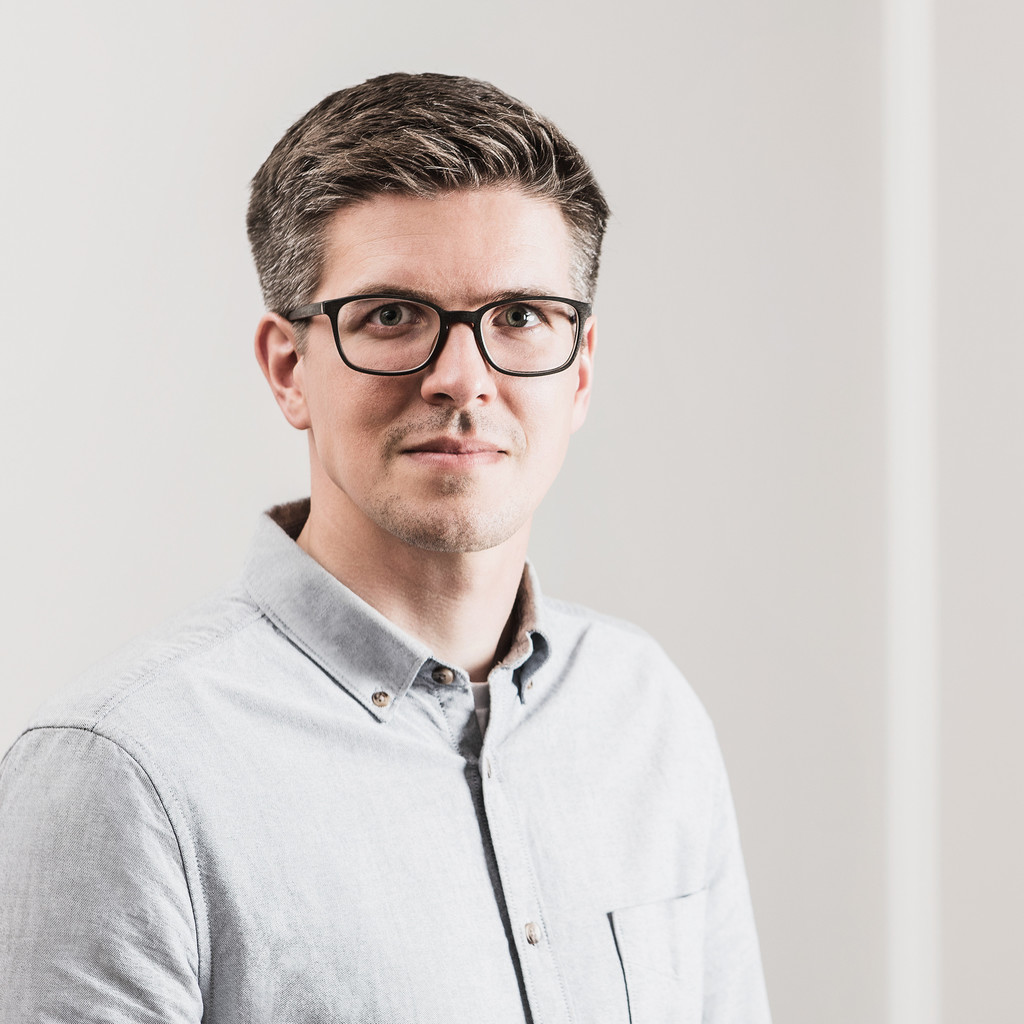
Dipl.-Ing. Christian Raulf
Christian Raulf is coordinator for the ERDF Innovation Network autoMoVe and for the research field Flexible Vehicle Concepts and Production
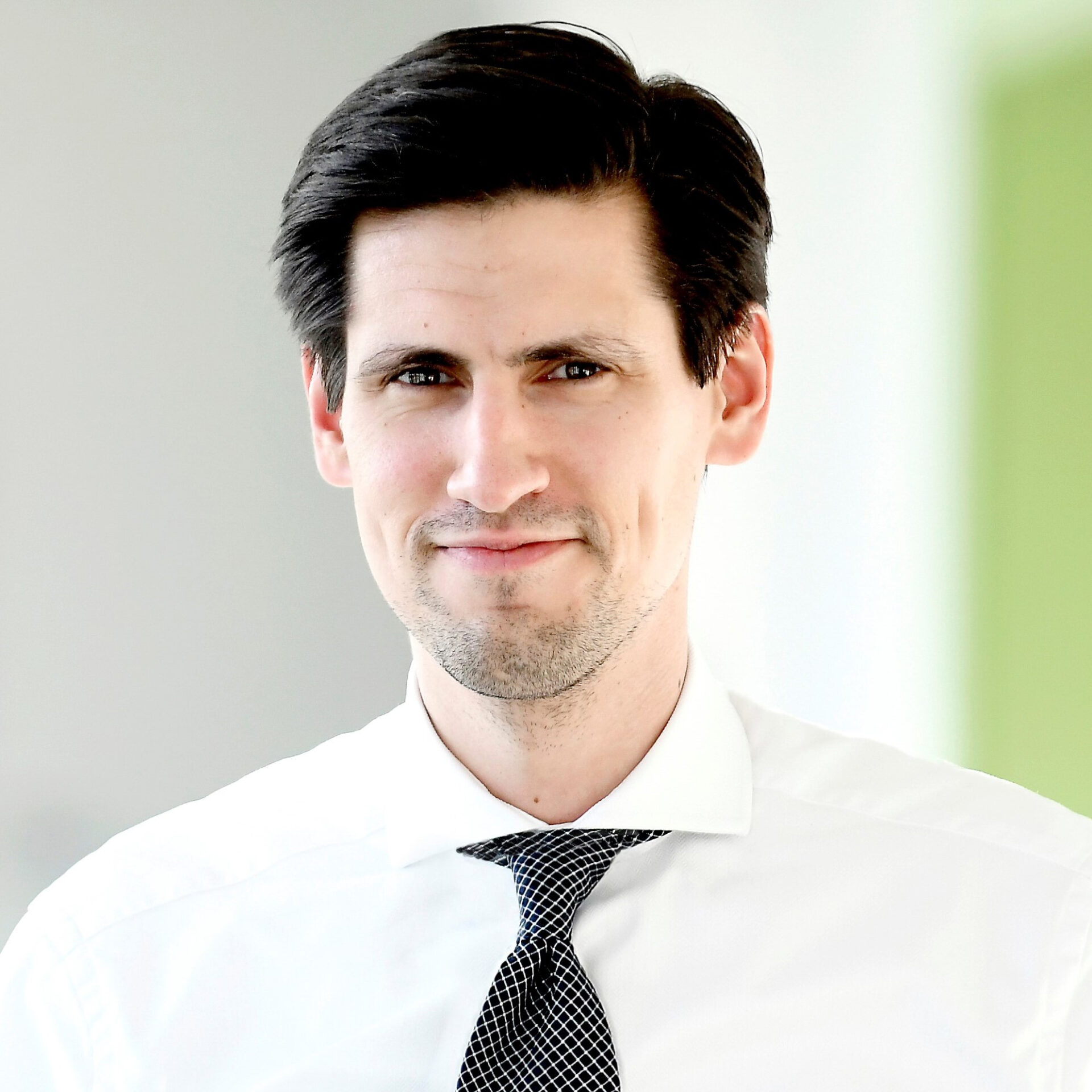
Dr.-Ing. Adrian Sonka
Adrian Sonka is Managing Director of the NFF in the EIT Urban Mobility at the NFF and head of the team “Perception, AI & Testing” at the Institute of Automotive Engineering at TU Braunschweig.

